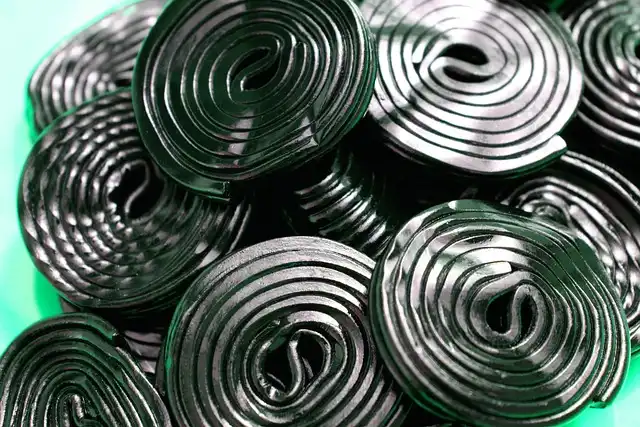Even Small Amounts of Licorice Can Raise Blood Pressure in Healthy Young People
- Normal Liver Cells Found to Promote Cancer Metastasis to the Liver
- Nearly 80% Complete Remission: Breakthrough in ADC Anti-Tumor Treatment
- Vaccination Against Common Diseases May Prevent Dementia!
- New Alzheimer’s Disease (AD) Diagnosis and Staging Criteria
- Breakthrough in Alzheimer’s Disease: New Nasal Spray Halts Cognitive Decline by Targeting Toxic Protein
- Can the Tap Water at the Paris Olympics be Drunk Directly?
Even Small Amounts of Licorice Can Raise Blood Pressure in Healthy Young People
- Should China be held legally responsible for the US’s $18 trillion COVID losses?
- CT Radiation Exposure Linked to Blood Cancer in Children and Adolescents
- FDA has mandated a top-level black box warning for all marketed CAR-T therapies
- Can people with high blood pressure eat peanuts?
- What is the difference between dopamine and dobutamine?
- How long can the patient live after heart stent surgery?
Even Small Amounts of Licorice Can Raise Blood Pressure in Healthy Young People
A new study has found that consuming even small amounts of licorice, as recommended by the World Health Organization’s daily intake, may still lead to high blood pressure in otherwise healthy young individuals. The study highlights the need for caution when consuming this black sweet treat, which is more common in Nordic countries.
Licorice is a polarizing food – you either love it or hate it. Made from the root of the licorice plant, it has been used for centuries to treat various ailments such as lung, liver, circulatory system, and kidney diseases.

While licorice may have some health benefits, research also indicates that glycyrrhizic acid (GA) in licorice root can raise blood pressure, prompting the EU and WHO to recommend limiting daily GA intake to 100 milligrams or less. Researchers at Lund University in Sweden decided to investigate if even this “safe limit” could be harmful to health.
They recruited 28 healthy participants aged 18 to 30 and randomly assigned them to an intervention group or a control group. Over two weeks, the intervention group consumed 3.3 grams of licorice tablets containing 100 milligrams of GA daily, while the control group consumed GA-free vegetarian licorice candies. After a two-week “washout period,” the groups switched roles. Participants were instructed to avoid licorice for at least four weeks before the study.
Blood pressure measurements were taken at baseline and during the study. Blood samples were used to measure sodium, potassium, lipid, and creatinine levels (which indicate kidney function), as well as two hormones that regulate fluid balance and blood pressure: renin and aldosterone.
The adrenal glands in the kidneys secrete aldosterone, which stimulates the kidneys to retain sodium (salt) and excrete potassium. The kidneys also produce renin, which controls angiotensin, another hormone. When blood pressure or sodium concentration drops, renin is released, converting angiotensin to an enzyme that constricts blood vessels, stimulates aldosterone secretion, and raises blood pressure, restoring sodium and potassium levels to normal.
“In the study, we found that consuming licorice containing 100 milligrams of glycyrrhizic acid per day raised blood pressure in young, healthy individuals,” said Peder af Geijerstam, a doctoral student in the Department of Health, Medicine, and Caring Sciences at the university and the study’s first and corresponding author. “No previous studies have shown this effect with such a small amount of licorice.”
When participants consumed licorice with GA, their blood pressure increased by an average of 3.1 millimeters of mercury (mmHg). Researchers also found that after consuming licorice, renin and aldosterone levels decreased. Based on the observed reductions in renin and aldosterone, the study participants most sensitive to licorice’s effects gained weight, indicating increased fluid retention. These individuals also had higher levels of N-terminal pro-brain natriuretic peptide (NT-proBNP), a protein that the heart secretes when it needs to work harder.
Co-author Fredrik Nyström stated, “Our study results give us reason to be more cautious in recommending and labeling foods containing licorice.”
The issue lies in the fact that licorice root or extract is most likely to be found in dietary supplements used to treat digestive issues and menopausal symptoms. In the US, these products may not indicate the amount of GA they contain on their labels, as while licorice is an FDA-approved dietary supplement, it is not subject to strict regulation.
However, Americans who enjoy eating this black sweet treat can rest assured, as many “licorice” products do not contain licorice at all. Anise oil smells and tastes like licorice but does not contain GA and is typically used as a flavoring. Nonetheless, it’s still advisable to consume licorice sparingly. The FDA recommends that people over 40 limit their licorice intake to no more than two ounces (57 grams) per day for two weeks; exceeding this amount can lead to problems.
The study was published in the American Journal of Clinical Nutrition.
Even Small Amounts of Licorice Can Raise Blood Pressure in Healthy Young People
(source:internet, reference only)
Disclaimer of medicaltrend.org
Important Note: The information provided is for informational purposes only and should not be considered as medical advice.



